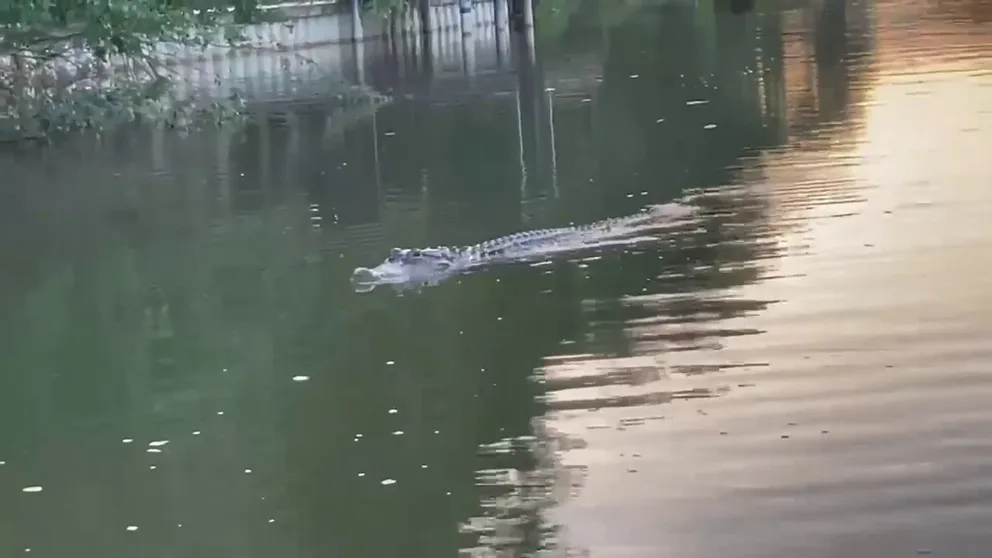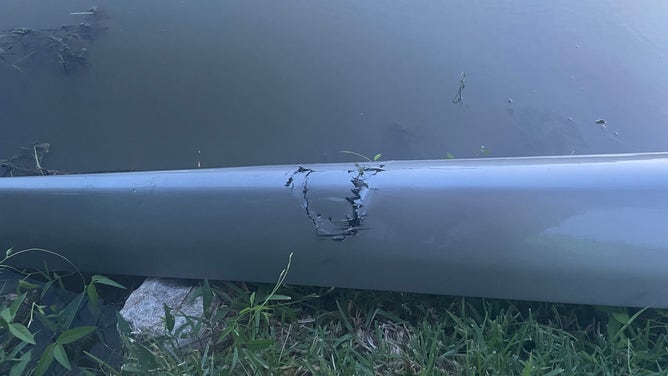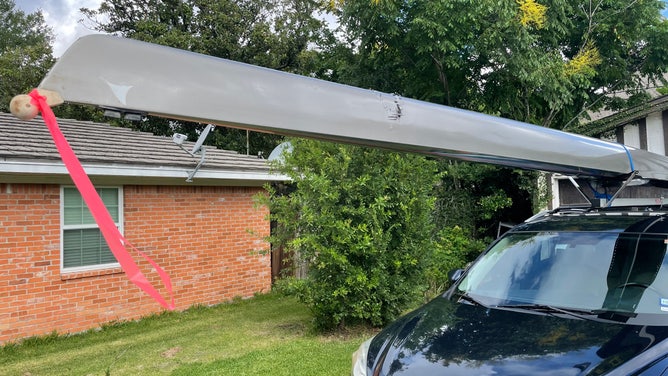Alligator sinks its teeth into a rowing boat in Texas
The gator left a U-shaped bite mark on the bottom and side of the boat that was rowing in an Oyster Creek waterway.
Predatory gator lurks prior to leaving bites in rower's boat in Texas
A predatory gator lurks prior to leaving bites in a rower's boat in Oyster Creek, Texas.
OYSTER CREEK, Texas – An alligator sunk its teeth into a rowing boat in a waterway in the town of Oyster Creek, located just south of Houston.
In photos and a video posted to social media, the gator can be seen swimming in the murky green waters near rower Eugene Janssen, who was floating in a carbon fiber single shell rowing boat.
Then, the situation escalated.
"The alligator came up and bit the bottom of his boat," said Dee Connors, president of the Greater Houston Rowing Club. Jenssen is a member of the club.
"(The boat) began to sink," Connors added. "So, he rode to the shore and got his self and the boat out of the water. He was not injured."
Once ashore, Janssen found punctures in the shape of a U – the shape of the alligator’s snout – along the bottom and side of his boat.
A couple of weeks later, a similar gator incident occurred with another boat in Oyster Creek. Connors, herself a rower, noted that these local gator attacks are out of the ordinary.
"I have rode in the same body of water for over 20 years, and our rowing club has been there over 30 years," she said. "In all that time, there has been absolutely no alligator attacks."
What might have attracted the gator
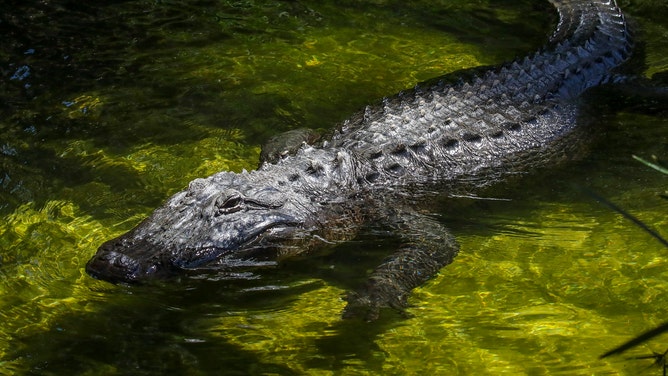
An American alligator.
(Irfan Khan / Los Angeles Times / Getty Images)
Texas Parks and Wildlife Department's alligator program leader Jonathan Warner also noted that incidents such as these are rare, stating they may have been a matter of mistaken identity.
Rowing boats, such as Jenssen's, are often long and thin. Warner surmised that the large alligator that bit Jenssen's boat may have thought the boat's silhouette from underwater was potential prey or another alligator. This might be the same reason why another large gator recently bit a different rowing boat in Oyster Creek.
HOW TO WATCH FOX WEATHER ON TV
"The reason I think that is, because the two boats that were bitten, the gator immediately released it," Warner said. "He had it in his mouth and realized, ‘Oh, wait a second. This is not a meal,’ and then the incident was over with."
As far as Oyster Creek goes, another factor may be recent changes to the area. According to Connors, trees and brush that once covered the side of the waterway's banks were removed, presumably by local officials.
"When you do that, you clean out the places where the alligators usually just kind of hang out," she said. "That could have irritated them also."
Gators in the Lone Star State
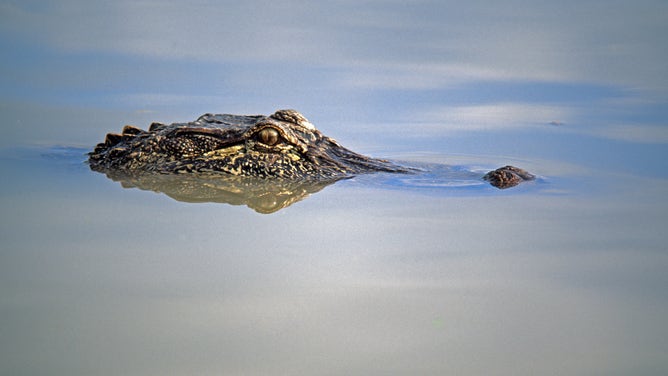
An American alligator floating in small Texas lake.
(Wild Horizons / Universal Images Group / Getty Images)
An estimated half-million alligators are in the state of Texas, according to Warner. Gators have been found in 100 of the state's 254 counties, with most of the reptiles located in east, southeast and south Texas.
Warner encourages people to be aware of alligator habitats and how their activities might affect the reptiles.
"Anybody involved with the outdoors and water in alligator habitat, it is wise to always, always keep your head on a swivel and know your surroundings," he said.
For rowers, in particular, Connors asked them to be conscious of the alligators' presence as they're out on the water.
"In the type of boats that we rowed, we rowed backwards, so we won't even see (the Gators) until we're right on top of them because you only look back about every four or five strokes," she said. "I just tell people to be cautious."
More information about what people should do if they encounter gators can be found on the Texas Parks and Wildlife Department website here.
